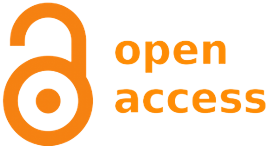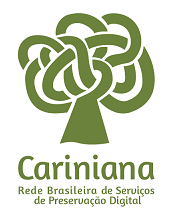Google classroom
didactic analysis of their activity interfaces
DOI:
https://doi.org/10.5433/1984-7939.2024v9n3p764Keywords:
Google classroom, didactic analysis, activity interfaces, virtual learning environmentsAbstract
This essay aimed to didactically analyze the Google Classroom learning object and its activity interfaces. We propose to present a didactic analysis of the software based on its dimension and pedagogical usability, however, even though our focus is to look at the didactic role of Google Classroom, we are not oblivious to the economic and political issues involved in the interface, and we weave criticism regarding Google's monopoly and we discussed the use of user data for hidden purposes. The methodological approach was qualitative, in which we presented an analysis that originated from work developed in the "Didactics" curricular component of a teacher training course - Degree in Pedagogy - at a Federal University in Brazil. The work consisted of analyzing learning objects and/or digital software used in basic and higher education in the state of Bahia, in order to understand how these interfaces enhance the teaching and learning process of students, since this is the object study of Didactics. In the results, we present the characteristics of Google Classroom, its usability and teaching potential and, above all, its limitations.
Downloads
References
AMIEL, Tel. Além das licenças: alinhando recursos educacionais e uma cultura digital. In: SEMINÁRIO WEB CURRÍCULO, 3., 2012, São Paulo. Anais [...]. São Paulo: PUC, 2012. Disponível em: http://www.pucsp.br/webcurriculo. Acesso em: 22 fev. 2024.
BAHIA. Secretaria de Educação. Google realiza formação on-line para estudantes e professores nesta quinta e sexta. Salvador: Secretaria da Educação do Estado da Bahia, 2020. Disponível em: http://escolas.educacao.ba.gov.br/noticias/google-realiza-formacao-line-para-estudantes-e-professores-nestas-quinta-e-sexta-16-e17. Acesso em: 22 fev. 2024.
BAHIA. Secretaria de Educação. Google sala de aula: e-nova educação. Salvador: Secretaria de Educação, 2021. Disponível em: http://enova.educacao.ba.gov.br/classroom/. Acesso em: 27 fev. 2024.
BAHIA. Secretaria de Educação. Secretaria da educação do estado e google dialogam sobre o uso do google sala de aula. Salvador: Secretaria de Educação, 2020. Disponível em: http://institucional.educacao.ba.gov.br/noticias/secretaria-da-educacao-do-estado-e-google-dialogam-sobre-o-uso-do-google-sala-de-aula. Acesso em: 22 fev. 2024.
BAHIA. Secretaria da Educação. Secretaria da educação promove formação para professores em parceria com google classroom. Salvador: Secretaria da Educação, 16 abr. 2020. Disponível em: http://educadores.educacao.ba.gov.br/noticias/secretaria-da-educacao-promove-formacao-para-professores-em-parceria-com-google-classroom. Acesso em: 22 fev. 2024.
BEHAR, Patrícia Alejandra; MACEDO, Alexandra Lorandi; SOUZA, Ana Paula Frozi de Castro e; BERNARDI, Maira. Objetos de aprendizagem para educação a distância. In: BEHAR, Patrícia Alejandra (org.). Modelos pedagógicos em educação a distância. Porto Alegre: Artmed, 2009.
BRASIL. Constituição da República Federativa do Brasil de 1988. Brasília, DF: Senado Federal, 1988. Disponível em: https://www.planalto.gov.br/ccivil_03/constituicao/constituicao.htm. Acesso em: 23 fev. 2024.
BRUNO, Adriana Rocha; MATTOS, Ana Carolina Guedes. Dispositivos das práticas docentes na cultura digital: curadoria digital na educação aberta. InterSaberes, São José do Rio Preto, v. 15, n. 34, p. 210-225, 2020. DOI: https://doi.org/10.22169/revint.v15i34.1737 DOI: https://doi.org/10.22169/revint.v15i34.1737
BRUNO, Fernanda. Máquinas de ver, modos de ser: vigilância, tecnologia e subjetividade. Porto Alegre: Sulina, 2013.
CANDAU, Vera Maria. Didática hoje: entre o “normal”, o híbrido e a reinvenção. Perspectiva, Florianópolis, v. 40, n. 3, p. 1-14, jul./set. 2022. DOI: https://doi.org/10.5007/2175-795X.2022.e85552 DOI: https://doi.org/10.5007/2175-795X.2022.e85552
FARIAS, Isabel Maria Sabino; SALES, Josete de Oliveira Castelo Branco; BRAGA, Maria Margarete Sampaio de Carvalho; FRANÇA, Maria do Socorro Lima Marques. Didática e docência: aprendendo a profissão. Brasília, DF: Liber Livro, 2011.
GOMES, Maria João; OSÓRIO, António José; VALENTE, António Luís. Challenges 2017: aprender nas nuvens. In: CONFERÊNCIA INTERNACIONAL DE TECNOLOGIAS DE INFORMAÇÃO E COMUNICAÇÃO NA EDUCAÇÃO, 10., 2017, Braga. Atas [...]. Braga: Centro de Competência em Tecnologias de Informação e Comunicação na Educação, 2017. Disponível em: https://repositorium.sdum.uminho.pt/bitstream/1822/46035/1/Chalenges_2017_VS-MJG.pdf. Acesso em: 29 fev. 2024.
LIBÂNEO, José Carlos. Didática. 2. ed. São Paulo: Cortez, 2013.
LUCKE, Heloisa. Dimensões da gestão escolar e suas competências. Curitiba: Positivo, 2009.
LÜDKE, Menga; ANDRÉ, Marli. Pesquisa em educação: abordagens qualitativas. São Paulo: EPU, 1986.
MINAYO, Maria Cecília de Souza (org.). Pesquisa social: teoria, método e criatividade. 18. ed. Petrópolis: Vozes, 2001.
OBSERVATÓRIO EDUCAÇÃO VIGIADA. Sobre. [Belém: UFBA], 2020. Disponível em: https://educacaovigiada.org.br/pt/sobre.html. Acesso em: 25 fev. 2024.
OMS – ORGANIZAÇÃO MUNDIAL DA SAÚDE. Folha informativa: covid-19. Brasília, DF: OMS, 2023.
PRETTO, Nelson de Luca; BONILLA, Maria Helena Silveira. Tecnologias e educação: um caminho em aberto. Em Aberto, Brasília, DF, v. 35, n. 113, p. 141-163, jan./abr. 2022. Disponível em: https://rbep.inep.gov.br/ojs3/index.php/emaberto/article/view/5085/4128. Acesso em: 22 fev. 2024. DOI: https://doi.org/10.24109/2176-6673.emaberto.35i113.5085
REITZ, Doris Simone. Avaliação do impacto da usabilidade técnica e pedagógica no desempenho de aprendizes em e-learning. 2009. Tese (Doutorado em Informática na Educação) – Centro Interdisciplinar de Novas Tecnologias na Educação, Universidade Federal do Rio Grande do Sul, Porto Alegre, 2009. Disponível em: http://hdl.handle.net/10183/18253. Acesso em: 22 fev. 2024.
ROCHA, Telma Brito. A prática educativa na educação on-line. Salvador: Eduneb, 2022.
ROCHA, Telma Brito. O plano de aula para educação on-line na pandemia de covid-19. EaD em Foco, Rio de Janeiro, v. 11, n. 2, p. 1-13, maio 2021. DOI: https://doi.org/10.18264/eadf.v11i2.1460 DOI: https://doi.org/10.18264/eadf.v11i2.1460
SANTAELLA, Lúcia. A educação e o estado da arte das tecnologias digitais. In: SALES, Mary Valda Souza (org.). Tecnologias digitais, redes e educação: perspectivas contemporâneas. Salvador: Edufba, 2020. v. 1, p. 149-164.
SANTOS, Edméa; SILVA, Marco. Desenho didático interativo para educação online. Revista Iberoamericana de Educación, Madrid, n. 49, p. 267-287, jan./abr. 2009. Disponível em: https://rieoei.org/historico/documentos/rie49a11.pdf. Acesso em: 2 fev. 2024. DOI: https://doi.org/10.35362/rie490683
SILVA, Carla Renata. Fim da privacidade. Medium, São Luís, 19 jul. 2022. Disponível em: https://medium.com/@etc.ufma/fim-da-privacidade-a17711426c4f. Acesso em: 22 fev. 2024.
SILVA, Marco. Sala de aula interativa. 3. ed. Rio de Janeiro: Quartet, 2002.
WILEY, David. Connecting learning objects to instructional design theory: a definition, a metaphor, and a taxonomy. Logan: Utah State University, 2000. p. 1-35.
Downloads
Published
How to Cite
Issue
Section
License
Copyright (c) 2024 Telma Rocha, Cleyton Williams Golveia da Silva Brandão

This work is licensed under a Creative Commons Attribution-NonCommercial 4.0 International License.
The journal reserves the right to make normative, orthographic and grammatical changes in the originals, with the aim of maintaining the cultured standard of the language and the credibility of the vehicle. It will, however, respect the authors' writing style. Alterations, corrections, or suggestions of a conceptual nature will be sent to the authors when necessary. In these cases, the articles, after being adequate, should be submitted to a new appreciation.









